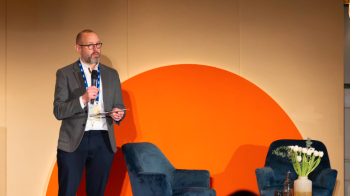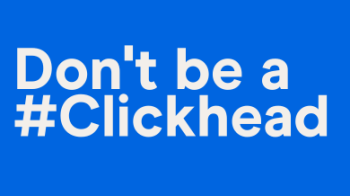10 questions buyers of attention measurement should be asking - and why they’re important
Posted on Thursday 09 February 2023 | IAB UK
We explore the questions buyers of attention measurement can ask in order to find measurement solutions that are best suited to their ads
Last year, as part of our commitment to demystify attention, the Research team here at IAB UK worked closely with our members to produce a tool to help the industry define attention - the attention definition matrix - which we published in Q4.
In this matrix, we highlight the four main methods for measuring attention that are currently being used in the advertising industry, as identified by our members:
- Salience models, that rely on AI-based predictive algorithms
- Proxies derived from engagement, that use tags such as mouse motion
- Proxies derived from eye tracking, that use tags and eye tracking data
- Bespoke panel studies, that use data such as tags or eye tracking from a group over time
Here, we look at the questions buyers of attention measurement can ask about these methods in order to find measurement solutions that are best suited to their ads:
1. Does the provider offer non-attention metrics as part of their solution?
Increasing interest in attention measurement means some providers now offer both attention and non-attention metrics all within one solution, while others choose to focus solely on attention metrics. For buyers, it is therefore a good idea to check if a solution will only include attention metrics, or also feature other non-attention metrics such as viewability and frequency rates.
2. Which attention metric/s does the provider offer/recommend and what do they capture?
Attention measurement in advertising is fast growing but still in its early stages. This means attention metrics are now myriad, although there is currently no global standard across the methods [1] that attention metrics can be measured against [2]. For this reason, it is important buyers understand the specifics of what attention metrics will and won’t capture in order to find the right solution for their ads.
3. Does the measurement solution make use of AI or modelling?
This question can help buyers to understand how their ads will be analysed, and the types of results they will get. Of the four methods, salience models are the most AI-focused in their basis on predictive algorithms, while some proxies derived from eye-tracking solutions incorporate AI (and typically make use of mathematical modelling). Bespoke panel studies may also have a modelling component.
4. Is the data collected based on the responses of people to an ad at that moment in time?
Of the methods, proxies derived from engagement, proxies derived from eye-tracking and bespoke panel studies take this into account, by tracking a person’s responses through signals such as mouse motion, eye movement, and facial expressions. However, some salience model providers do make use of historical human response datasets in order to train their models. This question may be most relevant to buyers that want to ensure people’s direct responses to their ads have been taken into account.
5. Does the provider use a panel?
By looking at the responses of a specific group over time - or panel - measurement providers are able to zoom in on how different demographics of the population are responding to an ad, based on factors such as age and gender. This can be important for buyers that want to focus on certain demographics in understanding an ad’s performance. Of the methods, this applies to bespoke panel studies. [3]
6. Does the provider use eye-tracking?
By tracking a person’s eye movements, measurement providers aim to understand a person’s focus and visual field, and ultimately, to what extent they were actually looking at an ad. Of the methods, proxies derived from eye-tracking make use of this data, as well as some bespoke panel studies. Buyers with campaigns that are highly/dynamically visual may be particularly interested in this question.
7. How long will it take to see the data and results?
Understanding how quickly the results of an analysis will become available is crucial for buyers, for instance, in pulling together project timelines. Of the methods, salience models, proxies derived from engagement and proxies derived from eye-tracking offer the potential to see attention data and results in real-time as they occur.
8. At what stage of a campaign can the solution be used?
Buyers may want to analyse their ads at different stages of a campaign, such as pre and/or post launch. Our members note that salience models and bespoke panel studies are mainly being used on ads before or after launch, whereas proxies derived from engagement and proxies derived from eye-tracking are currently being used throughout an ad’s lifecycle.
9. Does the provider offer heatmapping?
Heatmaps can be a great way to visualise how well the different elements of an ad are capturing attention, and can be attractive to buyers looking for accessible visual representations of their ads performance, alongside figures and statistics. Our members note that heatmaps are currently possible with some salience model and bespoke panel study solutions.
10. Is the provider’s solution suited to campaign creatives?
Of the methods, our members highlight that salience models and bespoke panel studies are mainly being used by clients to assess the creative elements of a campaign. Buyers that are most interested in analysing the creative elements of a campaign may therefore choose to prioritise this question.
By using these questions, buyers can dig deeper into their ad requirements and the methods available to them to find the right solution for their ads. Overall, this empowers both providers and buyers as it closes any technical-to-practical gap between both sides, which is particularly important in a space as complex and fast-growing as attention.
With healthy competition between providers and the possible introduction of standards around attention metrics, the definitions for these methods are likely to change over time as new methods come to the fore. However, in focusing on fundamentals, we expect and hope that these questions will remain useful to buyers of attention measurement in the years to come.
Footnotes
1 This is a point other IAB’s have also discussed, such as IAB Australia in its Ad Attention Landscape Report, 2022
2 However, there are currently benchmarking initiatives for methods in their own areas, such as the MIT/Tuebingen Saliency Benchmark for salience models
3 Please note that bespoke panel studies refer to ‘active’ panels where panellists are recruited for a specific campaign, typically to assess its creative. ‘Passive panel studies’ are a separate method, and consist of permanent panels that gather attention data over the long-term without a specific campaign or creative focus
Related content
Marketers rank digital’s effectiveness above offline channels
Learn moreAd-supported digital services are worth £14,600 a year to UK households
Learn moreDigital advertising’s share of market hits 75%
Learn moreWorried you might be a #Clickhead? We’re here to help
Learn more
Rediscover the joy of digital advertising
Champion connections instead of clicks. Capture audiences' imaginations, not just their attention. Boldly find your own beat instead of letting tech set the pace. It’s time to rediscover the joy of digital.



